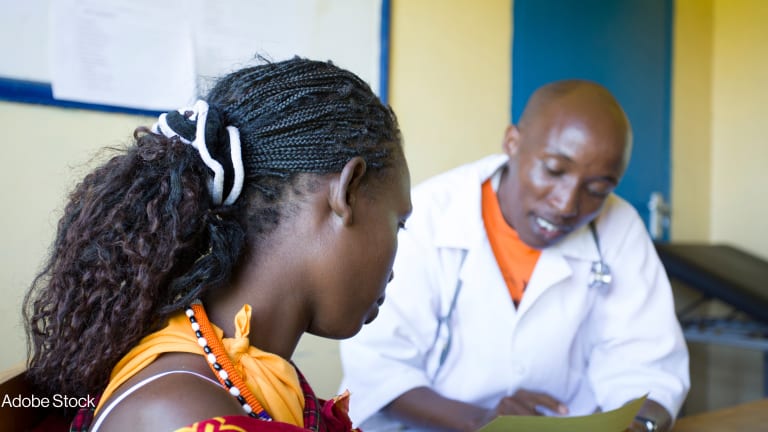
Lake Victoria, a source of livelihood for the 35 million people who live along its shores, is a vital resource in East Africa. Unfortunately, it is also colloquially known as the world’s most dangerous lake.
With an estimated 5,000 deaths per year due to drowning, the National Lake Rescue Institute reports that Lake Victoria is the most dangerous stretch of water in the world in terms of deaths per square kilometer. This blog will elaborate on this problem and our approach to increase resilience in this specific area.
The problem stems from the fact that National Meteorological and Hydrological Services in the Horn of Africa lack the resources to deliver timely weather warnings to the 200,000 active fishermen on the lake. Compounding this problem is the fact that climate change is making weather patterns less predictable and more volatile. In addition to severe storms on Lake Victoria, floods, droughts, thunderstorms and heavy winds are all expected to become more frequent as a result of climate change.
An effective early warning system in the Horn of Africa, beginning in Uganda, could significantly mitigate the effects of acute climate-induced shocks. Based on robust climate observations, such a system would leverage high rates of cell phone use in Uganda to deliver timely alerts to those who are most vulnerable. Providing timely and critical information to fishermen and smallholder farmers will increase their capacity to adapt in real time to severe weather events.
Ultimately, we want farmers, fishermen and primary food producers to be able to use this meteorological information to run profitable ventures, enhance their productivity and protect their assets. Our approach is to focus on three main pillars: improved technology, education and innovative financing solutions. We strongly believe that this approach will build resilience, improve productivity and better protect the assets of the stakeholders.
Improved technology
In order to set up the needed climate services, the end-to-end meteorological monitoring and prediction infrastructure needs to be designed and implemented. The infrastructure will be based on an innovative, cost-effective, durable and real-time early warning system network that will enable collection and transmission of timely, accurate and local data to users.
To fit the local context, the information needs to be packaged and disseminated in local languages using multiple technology options, including mobile phones, multimedia and radio. The end result is to provide localized data that will enable the packaging of specific and local information for different users.
Integrated technology options will be used, such as a platform that sends the data to the end user, along with information on mobile money, payment for services, saving money, enquiring about markets, selling products, contacting resource people and finding products or services, among others.
Education
In addition to improved technology, it is very important to educate the end users, about both climate information and financial information. The project will bring out the inherent resilience and adaptability of farmers and fishermen by sensitizing them to the benefits of accessing and using weather and climate information as the missing link in managing and improving their productivity.
At the moment, people in developing countries like Uganda don’t have access to reliable weather forecasts. Local authorities take the scant information that is available and push it out to the general public using mass media channels such as radio and television. They decide the subject, time and place for message broadcast.
However, these “push” communication strategies do not meet the informational need of the general public; people require information at a specific moment of need. For example, fishermen on Lake Victoria need to check on current weather conditions every morning before beginning their workday. In other words, they need the ability to choose the subject, time and place to access reliable information in their local language.
Innovative financing solutions
When provided with climate information, individuals will be able to begin stabilizing their businesses. In order to maintain this infrastructure and to create a sustainable and independent business model, new and innovative financing solutions are required.
Such solutions will eventually lead the end users to pay for the services. At the same time, the available data and the engaged end users will also open up new finance options and products, such as insurance.
To conclude, if we want to build resilience in the Horn of Africa by using an effective early warning system, it is not only important to make this technically feasible. Education of the end users and finance solutions also play a major role.
This blog post is part of a series highlighting the innovative projects supported by the Global Resilience Partnership, an initiative by The Rockefeller Foundation, U.S. Agency for International Development and Swedish International Development Cooperation Agency designed to help millions in Africa and Asia build more resilient futures.
You can help shape our coverage on global development innovations by emailing gdb@devex.com or tweeting #innov8aid.








